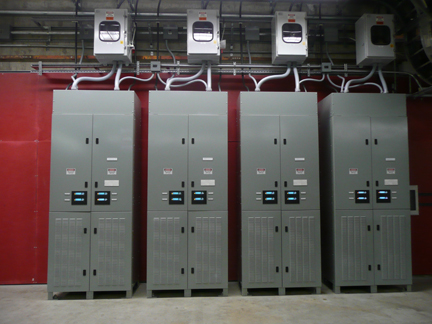The Los Angeles County Metropolitan Transportation Authority (LACMTA) was established in 1993 in order to merge the Los Angeles County Transportation Commission and the Southern California Rapid Transit District, and now serves thousands of riders daily. LACMTA is responsible for the Metro Bus fleet, Rapid Bus lines and Metro’s rapid transit subways stations.
In the next 25 years, Los Angeles County is going to grow exponentially, and will be faced with the task of increasing the capacity of the Metro system, as well as finding alternative energy solutions to reduce pollution.
In order to conserve energy and reduce utility costs, L.A. Metro has integrated the VYCON REGEN system into the Red Line rapid transit subway Westlake/McArthur Park station. The project, which took five years of research and development, was titled Way Side Energy Storage System (WESS) and was funded by the Federal Transit Authority (FTA) under the Transit Investments for Greenhouse Gas and Energy Reduction (TRIGGER) Program, part of the American Recovery and Reinvestment Act (ARRA) of 2009.
The REGEN technology, which captures energy regenerated by trains as they brake into passenger stations, will allow Metro to reduce its total energy consumption and peak power demand from the utility. To date, the data collected shows Metro is realizing 20% in energy consumption. It is estimated the project will have an annual savings of 541 megawatt hours based on recent data, which could provide 100 average California homes with power.
According to Frank Castro, Metro’s Project Manager for WESS, “Metro is highly pleased with the operational performance and energy savings realized by this high-tech, first-of its-kind project. We believe it will contribute to a greener environment and achieve our sustainability goals, and at the same time reducing our utility bills.”
Read more: Saving Money Every Day: LA Metro Subway Wayside Energy Storage Substation White Paper

